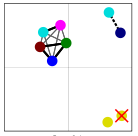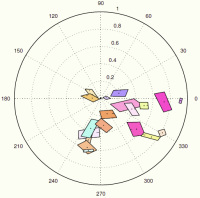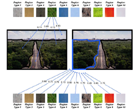We consider a family of metrics to compare images based on their local descriptors. We encompass the VLAD descriptor and matching techniques such as Hamming Embedding. Making the bridge between these approaches leads us to propose a match kernel that takes the best of existing techniques by combining an aggregation procedure with a selective match kernel. Finally, the representation underpinning this kernel is approximated, providing a large scale image search both precise and scalable, as shown by our experiments on several benchmarks.
Image and Video Analysis IVA
IVA
 IVA
IVA 




